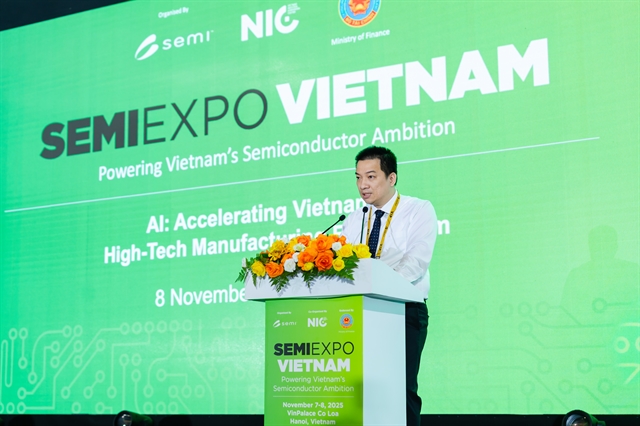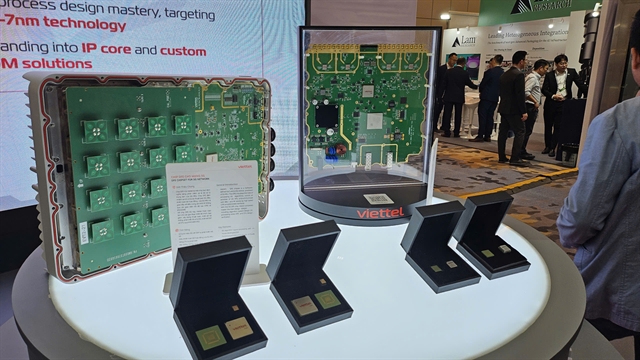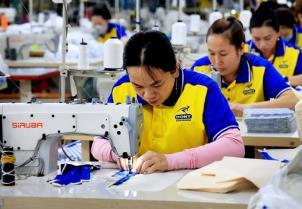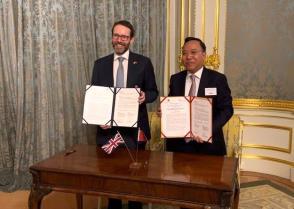If Việt Nam can expand its semiconductor ecosystem, scale AI applications across industrial sectors and retain the engineers who develop these technologies, it could shift from a manufacturing destination to a high-tech innovation hub.

HÀ NỘI — Việt Nam is accelerating efforts to build a competitive high-tech ecosystem anchored in artificial intelligence (AI) and semiconductors, as policymakers, industry leaders and research institutions converge on a shared goal of technological self-reliance and global integration.
The message was underscored at the conference themed 'AI: Accelerating Việt Nam's High-Tech Manufacturing Ecosystem' held within the SEMIExpo Vietnam 2025, where government agencies and industry executives laid out strategic priorities for infrastructure, talent development and cross-border collaboration.
Representing the Ministry of Science and Technology, Hồ Đức Thắng, director of the National Institute of Digital Technology and Digital Transformation, affirmed that Việt Nam is entering a pivotal window of opportunity.
"Việt Nam cannot forever remain a follower, using others' technologies," Thắng said.
"Our aspiration is to gradually rise to master, moving towards autonomy and asserting national digital sovereignty over AI."
He said that the Government has formally submitted the draft Law on Artificial Intelligence to the National Assembly, placing Việt Nam among the first countries globally to enact a dedicated AI regulatory framework. The objective, he emphasised, is "not to tighten control, but to create an open, safe legal corridor based on risk management to promote innovation."
A core element of the strategy is state-led investment in high-performance computing to secure computational capacity necessary for large-scale AI research and deployment.
Thắng highlighted that this push for computing infrastructure autonomy directly translates into new commercial opportunities.

He added: "We need 'Make in Việt Nam' chips. We need design, packaging and testing solutions mastered by Vietnamese people to build those supercomputers. The development of AI infrastructure is a gigantic order for the domestic semiconductor industry."
Industry speakers at the conference examined the practical link between AI adoption and semiconductor manufacturing capacity.
A panellist emphasised that the challenge is not talent creation but retaining talent by ensuring domestic roles are positioned at the technological frontier.
Data accessibility and integration are also seen as essential to sharpen manufacturing efficiency and product reliability.
Ricky Sim, managing director & CEO at Advantest Singapore, said that the industry is still in the early stages of harnessing AI’s full potential.
"Data is key, data is critical, and it is only with this data that we can improve the quality, the yield, and the functionality of the product," he said
A regional strategy for competitiveness
Speakers also emphasised that Việt Nam's rise in the semiconductor value chain will be strengthened through deeper cooperation with ASEAN manufacturing ecosystems. With countries in the region contributing complementary strengths in IC design, back-end assembly, materials research and equipment engineering, shared investments could help Southeast Asia compete globally.
"ASEAN as a market and a hub could actually compete together worldwide," said Lim Soon, CEO of SSMC Singapore, arguing that Vietnam should leverage regional specialisation while pursuing its semiconductor ambitions.

NIC's role in enabling innovation
The National Innovation Centre (NIC) outlined ongoing initiatives to link research institutions, enterprises, and foreign partners through technology transfer programmes and investment facilitation.
"NIC views close collaboration among government, industry, academia and research institutions as essential to building a globally competitive high-tech ecosystem," said Hoàng Trung Hiếu, deputy director at NIC, noting the increasing presence of major electronics and semiconductor investors in Việt Nam.
He emphasised that AI is transforming production models across Việt Nam's industrial base, from electronics manufacturing to robotics-enabled automated factories.
With global estimates projecting AI to add more than USD 15 trillion to the world economy by 2030, Việt Nam is seeking to ensure its manufacturing sector captures part of that value.
The country's strategy hinges on synchronised progress across regulation, infrastructure, financial support and human capital.
Similarly, Thắng reaffirmed that the Government is not only enabling innovation but will also act as a critical early market participant, adding: "The state will be the biggest customer, setting problems large enough and challenging enough to invite the business community, institutes, and universities to join in finding solutions."
Speakers agreed that the coming years will be decisive. If Việt Nam can expand its semiconductor ecosystem, scale AI applications across industrial sectors and retain the engineers who develop these technologies, it could shift from a manufacturing destination to a high-tech innovation hub. — BIZHUB/VNS





